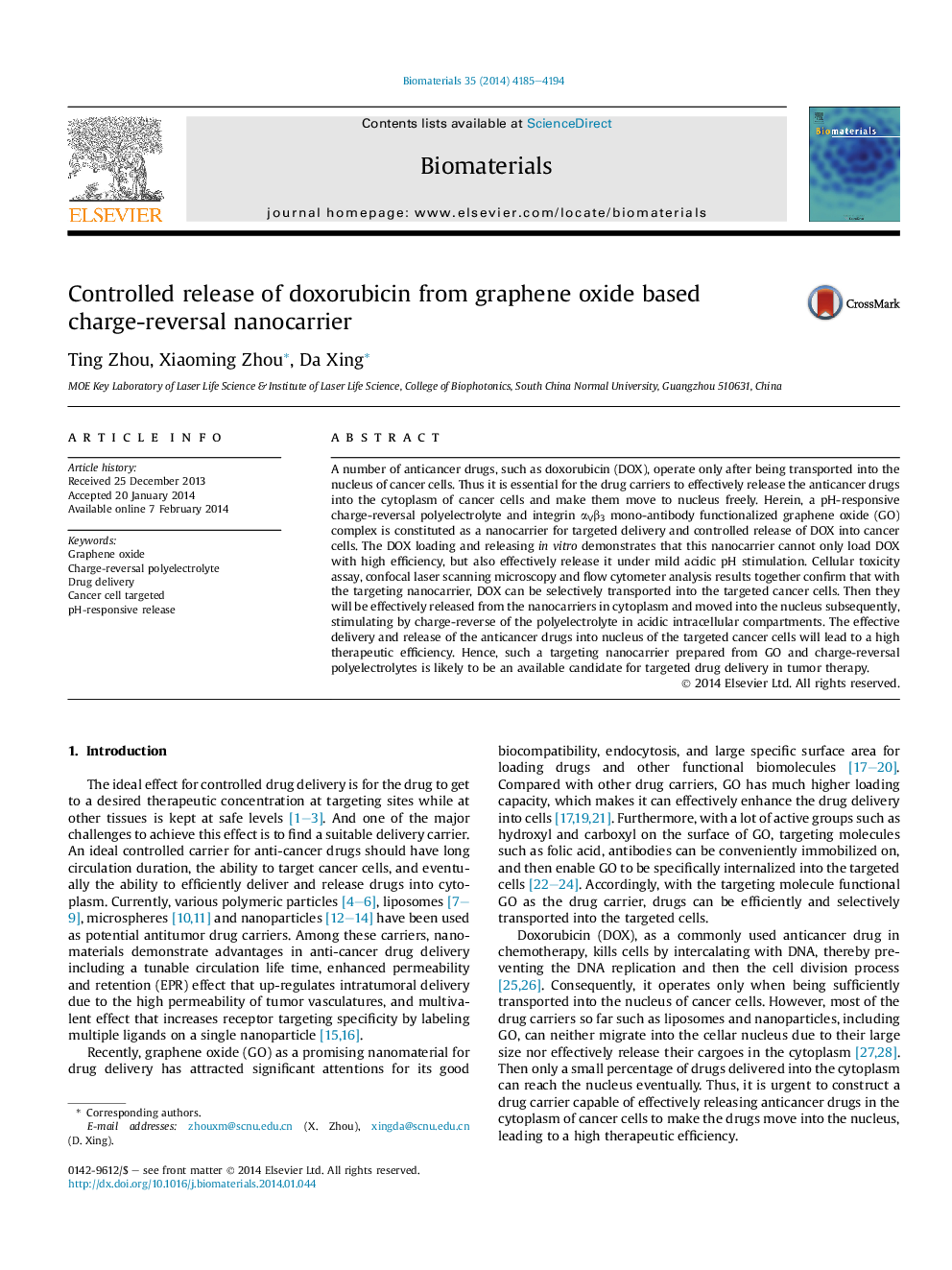| Article ID | Journal | Published Year | Pages | File Type |
|---|---|---|---|---|
| 10228069 | Biomaterials | 2014 | 10 Pages |
Abstract
A number of anticancer drugs, such as doxorubicin (DOX), operate only after being transported into the nucleus of cancer cells. Thus it is essential for the drug carriers to effectively release the anticancer drugs into the cytoplasm of cancer cells and make them move to nucleus freely. Herein, a pH-responsive charge-reversal polyelectrolyte and integrin 뱉
¤Î²3 mono-antibody functionalized graphene oxide (GO) complex is constituted as a nanocarrier for targeted delivery and controlled release of DOX into cancer cells. The DOX loading and releasing in vitro demonstrates that this nanocarrier cannot only load DOX with high efficiency, but also effectively release it under mild acidic pH stimulation. Cellular toxicity assay, confocal laser scanning microscopy and flow cytometer analysis results together confirm that with the targeting nanocarrier, DOX can be selectively transported into the targeted cancer cells. Then they will be effectively released from the nanocarriers in cytoplasm and moved into the nucleus subsequently, stimulating by charge-reverse of the polyelectrolyte in acidic intracellular compartments. The effective delivery and release of the anticancer drugs into nucleus of the targeted cancer cells will lead to a high therapeutic efficiency. Hence, such a targeting nanocarrier prepared from GO and charge-reversal polyelectrolytes is likely to be an available candidate for targeted drug delivery in tumor therapy.
Related Topics
Physical Sciences and Engineering
Chemical Engineering
Bioengineering
Authors
Ting Zhou, Xiaoming Zhou, Da Xing,
